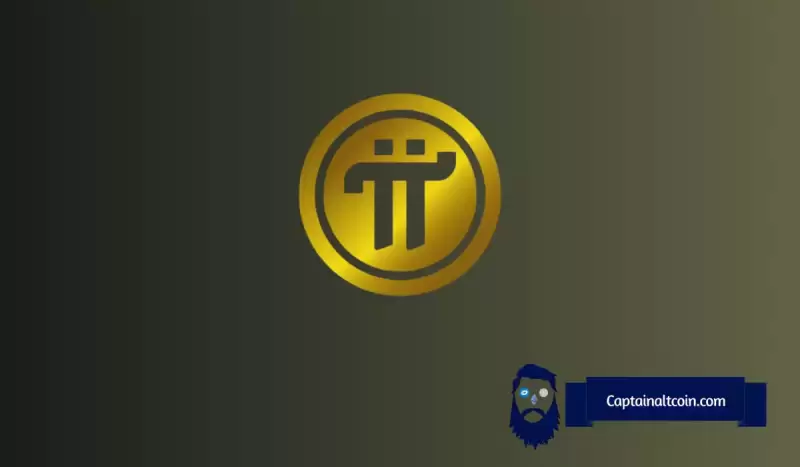 |
|
 |
|
 |
|
 |
|
 |
|
 |
|
 |
|
 |
|
 |
|
 |
|
 |
|
 |
|
 |
|
 |
|
 |
|

Institutions are adopting utility-based protocols at an increasing rate, with XRP, Stellar, and Hedera playing a key role in transforming the global financial system, according to entrepreneur and writer Max Avery.
In a series of X posts, Avery highlights the contributions of experts like Hiromi Yamaoka, a former official at the International Monetary Fund, in the pursuit of an effective financial system. According to Avery, Yamaoka has created frameworks to facilitate collaboration between central banks and private firms.
This collaboration combines the technological efficiency of private companies with the trust and control of Central banks. Private companies like Constellation, Hedera, Stellar, and Ripple aim to innovate with programmable solutions.
Meanwhile, Central banks offer supervision and issue stable assets, such as Central Bank Digital Currencies (CBDCs).
This is done by a joint effort. Central banks issue stable assets, like CBDCs, and provide oversight. Private entities, like Ripple, Stellar, Hedera, and Constellation, seek to innovate with programmable solutions. This partnership combines banks’ trust and control with private…
— Max Avery (@realMaxAvery) December 29, 2024
Institutions are turning to XRP for its ability to facilitate instantaneous and cheaper cross-border payments, eliminating the need for pre-funded accounts and offering on-demand liquidity and quick currency bridging.
Moreover, Avery highlights the XRP Ledger's (XRPL) capabilities beyond being a payment system. He points out how the blockchain can tokenize assets like real estate and carbon credits. The XRPL also has a decentralized exchange for direct asset trading and Hooks for adding lightweight smart contracts to expand its utility.
XRPL also distinguishes itself from other blockchains in terms of energy efficiency. Unlike Bitcoin mining, XRPL utilizes a consensus mechanism that is faster, greener, and scalable. It demonstrates that innovation in finance is possible without compromising the environment, providing a sustainable way forward.
Like XRP, Stellar's native token, XLM, also aims for financial inclusion. The network charges less for small transactions and supports scalable private CBDCs, aiding the underbanked and enabling global economic access.
Another popular utility-based network is Hedera, which is also shaping the future of financial systems. Hedera's native asset, HBAR, enables low-cost, high-speed transactions and supports Decentralized Applications (dApps).
Additionally, HBAR is utilized for staking, which supports network governance and security, providing an effective and scalable solution for a range of financial services.
Interestingly, these networks also complement each other. For example, while XRP transforms institutional finance, XLM ensures access for all, covering the entire financial spectrum and creating a complete solution for modern financial systems.
Meanwhile, the adoption of utility-based networks is gaining momentum. For instance, Ripple's partnerships with banks are growing, as CNF reported, showing Ripple's increasing integration into the global financial system.
As regulation improves, Avery anticipates a skyrocketing adoption.
Avery concludes that the future of utility is unfolding now, despite some people's skepticism.
“These networks are leading the shift by blending their advanced technology with real-world utility. It’s the present, taking shape in real-time, whether people want to believe it or not,” he notes.
免責聲明:info@kdj.com
所提供的資訊並非交易建議。 kDJ.com對任何基於本文提供的資訊進行的投資不承擔任何責任。加密貨幣波動性較大,建議您充分研究後謹慎投資!
如果您認為本網站使用的內容侵犯了您的版權,請立即聯絡我們(info@kdj.com),我們將及時刪除。
-

-

- 隨著索拉納模因硬幣的上升,Bonk(Bonk)價格飆升
- 2025-04-26 16:55:12
- Meme硬幣正在上升,Bonk(Bonk)是出色的表演者之一,在比特幣最近的激增後,比特幣的表現強勁。
-

- 從4月8日起,狗狗(Doge)百萬富翁地址的數量增加了14.33%
- 2025-04-26 16:50:13
- 反彈發生在幾個月的政治爭議之後,與100萬美元以上的總督持有者的急劇下降相吻合。
-

- 聰明的錢正在積累這三種類型的加密項目
- 2025-04-26 16:50:13
- 加密世界一直在變化,它傳達給投資者的信號也是如此。考慮到加密時代,您會想
-

-

- 特朗普令牌在戲劇性集會後面臨抵抗
- 2025-04-26 16:45:13
- 這個特朗普加密項目飆升了73%以上,圍繞著與唐納德·特朗普總統的獨家晚宴的興奮提高了其持有人。
-

- 雖然草種子看起來很小又無害,但獸醫慈善機構PDSA警告說,它們可能會對我們的四足朋友造成傷害。
- 2025-04-26 16:40:12
- 如果您的狗喜歡在長草中跑來跑去,請務必始終檢查它們的草種子
-

- 在茉莉花的日常範圍內形成了大量掉落的楔形圖案
- 2025-04-26 16:40:12
- 價格正試圖接近其關鍵的中期水平阻力區,很可能很快就會對其進行測試。
-



























































